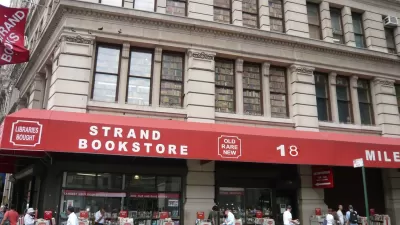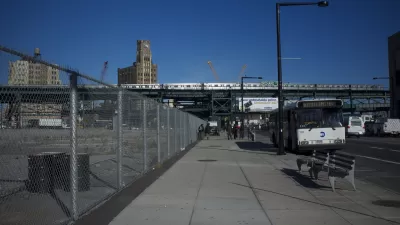During Michael Bloomberg's time in office, New York City has protected more historic sites than under any of his predecessors. The 41 new or expanded historic districts have developers fuming over what they see as planning overreach.
Recognition of sites with historic merit or buffet against against over-development? Laura Kusisto looks at the controversy over the work of New York's Landmarks Preservation Commission during Mayor Bloomberg's three terms in office.
"Under Robert Tierney, appointed chairman of the Landmarks Preservation Commission by Mr. Bloomberg, the city has placed less emphasis on granting individual structures historic status and more on designating entire districts," she explains. "The result: Two percent of the city is now encompassed by the districts, and 10% of Manhattan."
"After the commission made historic districts of the more obvious brownstone-lined neighborhoods, however, critics have suggested some of its more recent decisions seemed based more on guiding development than preserving areas where the buildings have a consistent style or even architectural merit."
Although Tierney rebuffed such suggestions, "many observers agree that the Bloomberg administration's use of historic districts—which often allow new buildings only if they are in scale with existing structures—has evolved as a counterweight to the mayor's pro-development policies that have transformed swaths of the city."
"The mayor understood if you're going to encourage development, you have to force preservation," said Mitchell Moss, a New York University urban planning and policy professor.
FULL STORY: Mayor of Preservation

Maui's Vacation Rental Debate Turns Ugly
Verbal attacks, misinformation campaigns and fistfights plague a high-stakes debate to convert thousands of vacation rentals into long-term housing.

Planetizen Federal Action Tracker
A weekly monitor of how Trump’s orders and actions are impacting planners and planning in America.

San Francisco Suspends Traffic Calming Amidst Record Deaths
Citing “a challenging fiscal landscape,” the city will cease the program on the heels of 42 traffic deaths, including 24 pedestrians.

Defunct Pittsburgh Power Plant to Become Residential Tower
A decommissioned steam heat plant will be redeveloped into almost 100 affordable housing units.

Trump Prompts Restructuring of Transportation Research Board in “Unprecedented Overreach”
The TRB has eliminated more than half of its committees including those focused on climate, equity, and cities.

Amtrak Rolls Out New Orleans to Alabama “Mardi Gras” Train
The new service will operate morning and evening departures between Mobile and New Orleans.
Urban Design for Planners 1: Software Tools
This six-course series explores essential urban design concepts using open source software and equips planners with the tools they need to participate fully in the urban design process.
Planning for Universal Design
Learn the tools for implementing Universal Design in planning regulations.
Heyer Gruel & Associates PA
JM Goldson LLC
Custer County Colorado
City of Camden Redevelopment Agency
City of Astoria
Transportation Research & Education Center (TREC) at Portland State University
Jefferson Parish Government
Camden Redevelopment Agency
City of Claremont





























